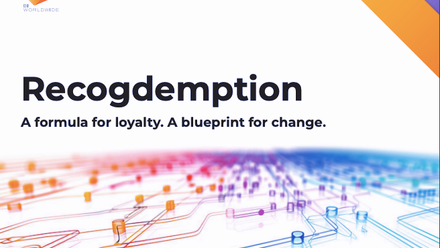Keeping your recognition and reward strategy inclusive and equitable
Reward and benefits are often neglected in discussions around inclusion and equity and yet they at the heart of ensuring workplaces have fair processes that address systemic, historical and cost of living challenges.
Since the Equal Pay Act 2010 and the start of gender pay gap reporting in 2017 there’s been an increased focus across the board on equity and inclusion in the workplace, both in terms of pay and diversity of talent.
While these actions have supported action taken, there is so much more to do to create real impact through reward practice.
As recently as 10 June this year, a government-led Equality Bill consultation ended seeking views on how to introduce additional mandatory ethnicity and disability pay reporting for large employers, which does look likely to be introduced.
That is likely to mean extra work for businesses in gathering data, communicating correctly and building employee trust around information-sharing, all of which are relevant to the question in hand.
However, it is highly recommended that employers think more broadly about how to embed transparent and fair practices.
Here are our top tips for making sure recognition and reward strategies remain inclusive and equitable in 2025.
1. Retain business leaders’ buy-in
Inclusion and equity measures have come under scrutiny and pressure in recent times, and in some cases, we’re seeing some companies using this as an excuse to back-track.
However, it is rare to find an organisation – and very unusual to find a candidate – that wants to perpetuate pay and reward differentials that continue to be unfair.
As HR professionals we need to raise awareness around the positive changes inclusive and equitable measures are making, and specifically the desire of our younger generation of workers to be more transparent and progressive.
Research has shown that a more diverse cross-section of people, and leaders, can help companies prosper financially. Even in 2018, Boston Consulting Group found that companies with above average diversity in leadership saw 19% higher revenue and 9% higher EBITDA.
McKinsey research in 2015, 2018, 2020 and 2023 consistently shows that organisations in the top quartile for diverse representation have a 39% chance of outperforming those in the lower quartile.
Clients are also telling us that by expanding their talent pools they are building workforces better equipped to relate with the client, customer base, buyers and suppliers, boosting customer and supplier retention.
2. Embrace transparency in your reward practices
Moving beyond traditional approaches to pay is not easy. Invariably, it requires companies to challenge themselves and think in a more open and transparent way about how pay reflects the true value of each employee’s contribution, irrespective of gender, age or background.
Where reward practices and decisions lack transparency, they are more likely to enable disparity and encourage either real or perceived unfairness, so sense-check your processes:
- Be transparent about your pay and grading framework - by clarifying the parameters guiding pay decisions you will promote inclusivity and equity.
- Define how you measure performance and contribution - hours in the office does not always equate to high workload or contribution. Defining these parameters will help everyone, including part-time workers (often women) and those with caring responsibilities.
- Make pay opportunities equal - where pay progression is based on skills acquisition, make sure everyone has the same chance to upskill, regardless of gender or age.
- Make access to recognition equal – a strong recognition strategy enables a situation where all workers can nominate and be nominated. If certain individuals or teams are perceived to be more ‘rewarded’ than others, trust in the scheme with break down. Remember too that personalising a reward adds authenticity and avoids situations where a worker’s gender or ethnicity will negate its value.
- Offer benefit that address socio-economic inequalities: Providing access to protection policies for employees on statutory sick pay and without death benefits, and providing accessible discount platforms to access savings on everyday items are a couple of great examples of balancing pay differentials.
- Educate employees and managers - help them understand how their pay is determined and build trust in the process.
- Publish your pay policy - by making it official employees and prospective recruits can understand and check things in their own time.
3. Embrace technology to inform your decisions
Where companies do not source and analyse robust pay data – both internal and external - employees will fill in an information vacuum by sourcing their own online.
This data will often lack context and detail and will mostly lead people to draw their own conclusions, which can end with some damaging misunderstandings.
Smart HR tools integrating multiple data sets can now help drive consistency and remove bias.
By laying out and measuring a latticework of data, the technology can create richer analysis, for example overlaying gender and ethnicity metrics on top of performance analysis numbers to help model scenarios and manage pay progression.
Increasingly, this kind of tech can also lay the information out in simple dashboards and reports for workers to grasp or managers to present.
- Use management information in pay review - understand and model pay decisions before they are made and put into effect. A dynamic digital pay review platform like Advance allows you to customise and set your annual pay review according to your pay principles, while also overlaying gender, ethnicity and performance metrics. This can help pre-empt and avoid decisions that could widen a pay gap or disadvantage a certain employee group.
- Know your position against the market - pay benchmarking software like PayLab uses data to build clarity around your current and aspirational pay stance, setting salaries and building pay structures.
- Be objective in the way you size and assess roles – a job evaluation tool like Evaluate helps you size roles in an objective way based on consistent criteria.
- Track the impact of decisions – all these HR tools have the kind of analysis and reporting that allows you to measure and correct the cumulative impact of your decisions over time.
- Surpass legislation – with a better idea of what is driving pay inequity, companies can go beyond mandatory requirements in a way that is attractive to employees and prospective recruits ensuring you stand out as an employer of choice.
4. Support and train your managers
For workers’ pay to reflect their value, we need to help managers talk effectively about pay. Good managers who are well informed inspire strong contributions and confident workers.
- Train managers – if they can understand and convey messages and decisions around pay they will be able to manage better. The tech tools and dashboards they provide will help enable this.
- Encourage cultural buy-in and trust - when managers can discuss reward processes and decisions, trust and openness filters down through the workers and instils loyalty and buy-in.
Supplied by REBA Associate Member, Personal Group
Personal Group provides the latest employee benefits and wellbeing products.








